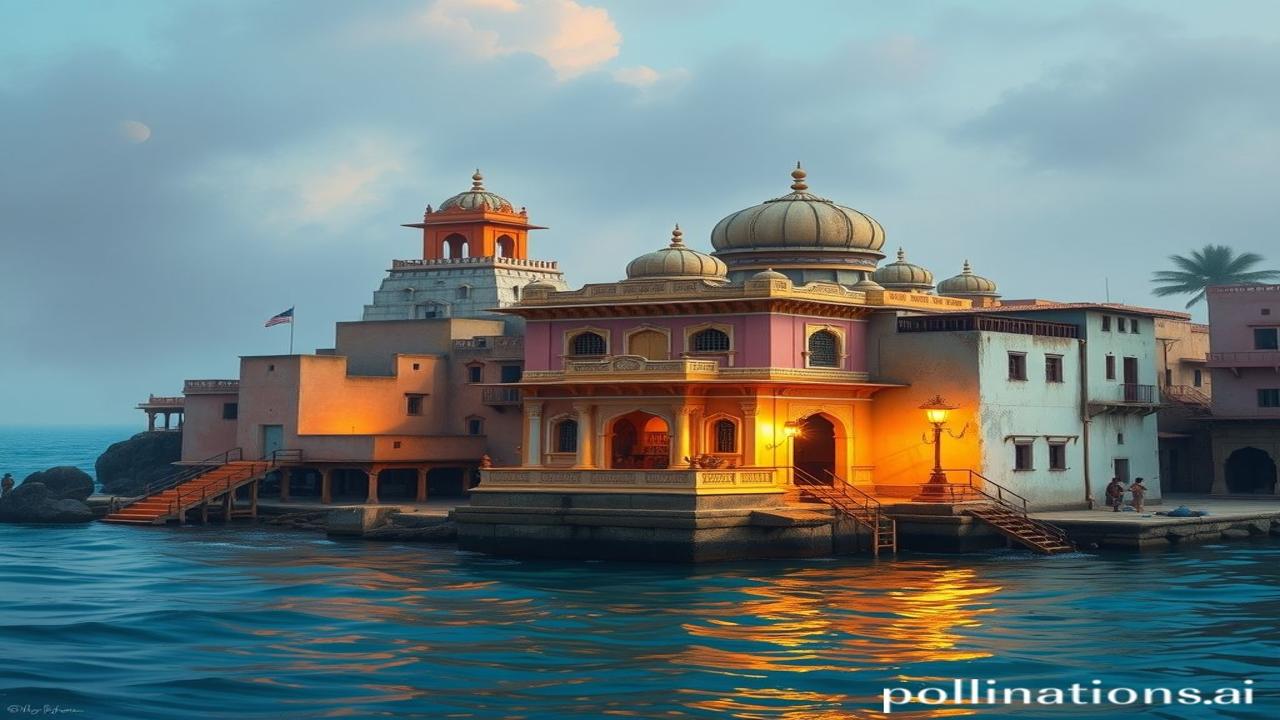Sahilon Ki Zubaani: Unraveling India’s Coastal Building Traditions
Kabhi dariya ke kinare baithe ho, aur aati hui lehron mein purane zamane ki khushboo mehsoos ki hai? Imagine, thousands of years ago, humare ancestors ne inhi saahilon par apne ghar, apne mandir, apni zindagi basaayi. Waqt ki dhool mein dabi hui, India ke coastal building traditions aisi hi kuch anokhi kahaniyan sunati hai. Aaj, hum unhi kahaniyon ko dhoondhne niklenge, aur jaanenge ki kaise yeh dhrohar aaj bhi humari pehchaan hai.
Itihaasic Panorama: When Seas Met Stones
Coastal building traditions of India are not just about architecture; they are a living testament to the ingenuity and adaptability of our ancestors. Yeh kahani shuru hoti hai Indus Valley Civilization se bhi pehle, around 3000 BCE, jab log sahil par apni zindagi guzaarne lage. Har civilization – Dravidian, Aryan, Mughal, European – ne apne rang bhar diye in coastal architecture mein.
From the towering temples of Tamil Nadu, built from granite to withstand the salty air, to the laterite stone churches of Goa reflecting a Portuguese influence, the Indian coastline became a canvas for diverse architectural styles.
Why is this important? Because it tells us about trade routes, cultural exchanges, and the sheer will of people to build and thrive in challenging environments.
Zameeni Sach: Jeevan Ke Rang, Logon Ke Sang
Socho, ek machhuara, Raamu, apne parivar ke liye ek chhota sa ghar bana raha hai. “Yeh laterite stone achha hai, jaldi sookh jaata hai,” woh apni biwi, Lakshmi se kehta hai. Ma Rukmini aaj naye kapde pehne hai, kyunki mandir mein utsav hai. Mandir ki deewarein samundar ki ret se bani hui hain, mazboot aur sundar.
Across the coastline, artisans worked tirelessly. In Kerala, carpenters shaped wooden boats with the same precision they used to carve intricate details into house façades. In Gujarat, stone masons built forts and palaces to protect their rulers.
Life was hard, with the constant threat of cyclones and storms. But their resilience shone through in their construction. Simple homes built from locally available materials – bamboo, coconut leaves, mud – were designed to withstand the elements. Unki kala unke jeevan ka ek hissa thi.
Dharohar Aur Pehchan: Aaj Kal Ke India Mein
Today, these coastal building traditions are woven into the fabric of modern India. We see echoes of them in:
- Architecture: Modern coastal homes borrowing design elements from traditional structures like pitched roofs and open courtyards.
- Rituals: Using specific materials like seashell lime plaster in temple constructions and renovations.
- Festivals: Celebrating local crafts and architecture during heritage festivals.
- Language: Preserving local dialects and terminology related to building techniques.
Yeh Bharatiyata ka ek zaroori hissa hai. These traditions remind us of our connection to the land and the sea, shaping our identity. They are living proof of our adaptability and resilience.
Mazedar Tathya: The Mysteries of Marine Architecture
Log samajhte hain ki coastal buildings kamzor hoti hain, lekin asli sach yeh hai ki kai traditional structures centuries tak khade rahe, thanks to clever engineering and locally sourced materials.
Did you know that many ancient temples along the coast use a special mortar made from seashells that has unique binding properties? This mortar not only makes the structures stronger but also helps them withstand the effects of saltwater erosion.
Drishya Aur Bhavnayein: A Sensory Symphony
Imagine the air thick with the smell of salt and fish, mixed with the fragrant smoke of cooking fires. The temple walls feel cool and smooth under your touch. You can hear the rhythmic crashing of waves, the chatter of fishermen returning with their catch, and the distant chanting of prayers from the temple. The warmth of the sun on your skin, the taste of coconut water, and the sight of colorful fishing boats bobbing on the horizon – all create a sensory symphony that is unique to the Indian coastline.
Antim Vichar: Echoes of Time
India’s coastal building traditions are more than just structures; they are stories etched in stone and whispered by the wind. They tell of a time when humans lived in harmony with nature, crafting beauty and resilience from the resources around them.
” वसुधैव कुटुम्बकम् “ – The world is one family. These coastal traditions remind us that we are all connected, bound by our shared history and our responsibility to preserve our dhrohar for future generations.
